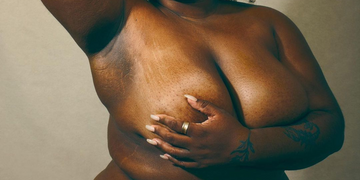Should women under 40 worry about breast cancer?

There’s a mistaken assumption that younger women don’t get cancer, so the idea of breast cancer is sometimes ignored at a young age. Cancer does get more likely as you age, but it’s still best to educate yourself on the topic. For early detection and prompt treatment, it’s best to know the possibilities early. Know your breasts so you can address any issues as early as you can. We’ll discuss the risk factors of breast cancer, how breast cancer is different for younger (those under 40 years old) women, recommendations on getting regular screening, and possible treatment options.
Breast Cancer Awareness
The cause of breast cancer is uncertain in many cases. Know how your breasts usually appear (both by sight and feel). Pay attention to any changes in appearance or texture. Watch for signs such as lumps, discharge from your nipple, inverted nipples, focal pain, or skin changes. Any of these attributes can be signs of breast cancer. You can gain a better understanding of breast cancer by talking to your doctor. A doctor can provide information about how to recognize warning signs and how to manage treatment after diagnosis.
Who’s at Risk?
When it comes to looking at the risk of developing breast cancer, there are 2 important things to keep in mind. There are factors that you can change to decrease your risk, and other factors that you cannot change. If you drink excessive amounts of alcohol and consume a lot of red meat, your chances of developing breast cancer can also increase. Some more factors that may increase your risk of developing breast cancer include:
-
Having a personal history of breast diseases (cancerous or otherwise)
-
Having a family history of breast cancer, particularly a mother, daughter, or sister
-
Having a history of radiation treatments to your chest (before turning 40)
-
Having a genetic defect such as the BRCA1 or BRCA2 mutation
-
Your first menstrual period occurring before the age of 12
-
Having your first child later in life
Which factors don’t increase your chances of getting breast cancer? Multiple pregnancies, caffeine intake, using antiperspirants, wearing underwire bras, using hair dye, having an abortion, miscarriage, and having breast implants don’t seem to have any relation. There is some evidence that breastfeeding can reduce your risk of breast cancer, but more research is necessary.
uti-complete-combo
How is Breast Cancer Different in Women Under 40?
It can be more challenging to diagnose breast cancer in women who haven’t turned 40 since younger women generally have more dense breast tissue. Cancer might be at a more advanced stage by the time a lump is noticeable in younger women. Be aware that cancer can occur at any age (there’s no “too young for cancer”), so don’t discount any warning signs like changes to breast appearance. A delay in diagnosis may lead to poorer outcomes, specifically leading to diagnosis at more advanced stages of cancer which can sometimes be more difficult to treat. Occasionally, a healthcare providers might also dismiss symptoms or adopt a “wait and see” approach, thinking that the symptoms you’re experiencing might be something other than cancer. If this is the case, it might be worth getting a second opinion. Common factors and challenges of breast cancer in younger women include:
-
More aggressive forms of breast cancer
-
Cancer that’s less likely to respond to treatment
-
Cancer often due to BRCA1 or BRCA2 mutations
-
Issues with sexuality, fertility, and pregnancy after treatment
It’s rare, but not impossible, for teenagers to get breast cancer. Since breasts are still developing, it poses even more of a challenge in diagnosis. Lumps can be a natural part of the development process and might disappear on their own. It can be hard to use simply having breast pain during developing years as breast pain, particularly as breasts are developing in puberty, can occur with changing hormones and the tissue growth that is occuring. If you believe the discomfort is beyond normal or lumps seem to grow, it can be beneficial to check in with your primary care provider to find out whether it’s a cause for concern.
Breast Cancer Prevention and Treatment
Early detection and prompt treatment can significantly increase the chances of survival. You might be eligible for preventative therapy if you’re in a high-risk category, specifically if your risk is higher than the average risk of getting breast cancer in the US. Your lifestyle can serve as prevention as well. Healthy living includes maintaining a healthy weight, getting enough physical activity, and minimizing your alcohol intake. Preventative treatment often includes surgery and prevention drugs can reduce breast density.
When Should You Get a Mammogram?
Mammograms aren’t typically recommended for women under 40 years old because breast density can impact the efficacy of the test. However, for high-risk cases digital mammograms may be suggested at an earlier age. Regular breast exams are recommended by 20. If you have genetic mutations such as BRCA1 and BRCA2 or have a family history of breast cancer, screening, usually with scheduled breast examinations and consideration of genetic testing, can start as early as 25 years old.
If you have questions about reducing your risk of breast cancer, recognizing its warning signs, or getting effective treatment, we suggest asking your primary care provider.
Keep Reading

How the SAVE Act is impacting married women
Apr 2

I don't want to get pregnant under this administration, what do I do?
Mar 19

Six weeks is too soon: the reality of abortion bans
Feb 24








